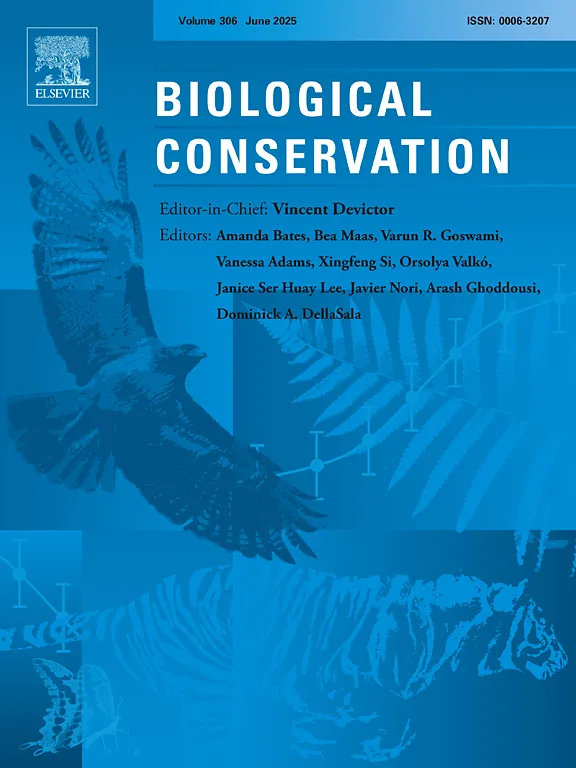BTO publishes peer-reviewed papers in a wide range of scientific journals, both independently and with our partners. If you are unable to access a scientific paper by a BTO author, please contact us.
Search settings
Time-in-area represents foraging activity in a wide-ranging pelagic forager
Author: Warwick-Evans, V., Atkinson, P.W., Gauvain, R.D., Robinson, L.A., Arnould, J.P.Y. & Green, J.A.
Published: 2015
07.05.15
Papers
A method to evaluate the combined effect of tree species composition and woodland structure on indicator birds
Author: Dondina, O., Orioli. V., Massimino, D., Pinoli, G. & Bani, L.
Published: 2015
Providing quantitative management guidelines is essential for an effective conservation of forest-dependent animal communities. Traditional forest practices at the stand scale simultaneously alter both physical and floristic features with a negative effect on ecosystem processes. Thus, we tested and proposed a method to define forestry prescriptions taking into account the combined effect of woodland structure and tree species composition on the presence of four bird indicator species (Marsh Tit Poecile palustris, European Nuthatch Sitta europaea, Short-toed Tree-creeper Certhya brachydactyla and Blue Tit Cyanistes caeruleus). The study was carried out in Lombardy (Northern Italy), from 2002 to 2005. By using a stratified cluster sampling design, we recorded Basal Area, one hundred tree trunk diameters at breast height (DBH) and tree species in 160 sampling plots, grouped in 23 sampling areas. In each plot we also performed a bird survey using the point count method. We analyzed data using Multimodel Inference and Model Averaging on Generalized Linear Mixed Models, with species presence/absence as the response variable, sampling area as a random factor and forest covariates as fixed factors. In order to test our method, we compared it with other two traditional approaches, which consider structural and tree floristic variables separately. Model comparison showed that our method performed better than traditional ones, in both the evaluation and validation processes. Based on our main results, in deciduous mixed forest where the exploitation demand is limited, we recommend maintaining at least 65 trees/ha with DBH>45cm. In particular, we advise keeping 70 trees/ha with DBH>50cm in chestnut forests and 300 trees/ha with DBH 20–30cm in oak forests. Conversely, in more exploited oak forests, we advise maintaining at least 670 trees/ha with DBH 15–30cm in chestnut forests and 100 trees/ha with DBH 10–15cm.
01.04.15
Papers
The contribution of volunteer recorders to our understanding of biological invasions
Author: Roy, H.E., Rorke, S.L., Beckmann, B., Booy, O., Botham, M.S., Brown, P.M.J., Harrower, C., Noble, D., Sewell, J. & Walker, K.
Published: 2015
23.03.15
Papers
Differential migration of chiffchaffs (Phylloscopus collybita and Phylloscopus ibericus) in Europe and Africa
Author: Catry, P., Lecoq, M., Araújo, A., Conway, G., Felgueiras, M., King, J.M.B., Rumsey, S., Salima, H. & Tenreiro, P.
Published: 2015
Avian migration strategies may include intra-specific variations, also known as differential migration. These migratory adaptations between conspecifics are particularly important given their implications for population dynamics. We aimed to examine the differential migration pattern as a function of age and sex, and whether this pattern also determines body morphology, in a passerine whose migration strategy includes movements to both pre- and sub-Saharan wintering areas. Thus, 1,100 common chiffchaffs Phylloscopus collybita were sampled during 2009–2012 at eight wintering locations within the Palearctic and Afrotropical regions. Biometric and body condition variables were studied for their relationship to geographical, climatic and productivity indexes. A higher proportion of adults and females were observed at lower latitudes. Common chiffchaffs were larger and in better body condition in sub-Saharan areas, coinciding with greater plant productivity and less annual rainfall. The selection of the southernmost areas by adults may be related to fidelity to more favourable sites. Southern and coastal locations offer better conditions for chiffchaffs, despite the challenges involved in crossing the Sahara Desert. Moreover, the greater skills of adults in finding abundant food resources may also drive greater relative abundance south of the Sahara. Greater body mass and fat deposits in birds wintering in sub-Saharan areas reflect higher resource availability and may imply that the birds are in better physical condition.
22.03.15
Papers
Seabird–wind farm interactions during the breeding season vary within and between years: A case study of lesser black-backed gull Larus fuscus in the UK
Author: Thaxter, C.B., Ross-Smith, V.H., Bouten, W., Clark, N.A., Conway, G.J., Rehfisch, M.M. & Burton, N.H.K.,
Published: 2015
The marine environment is increasingly subject to pressure from human activities, with knock on effects for wildlife. Many studies over recent years have attempted to assess the risk of offshore wind turbines to seabirds. Birds might be injured or killed through collision with turbines or associated structures, they might be displaced from an area they previously used, and they could suffer energetic costs of bypassing a wind farm instead of commuting straight through. BTO has been using long-lived GPS tags to conduct a multi-year study into the possible effects of offshore wind farms on Lesser Black-backed Gulls. Results show that birds’ use of the environment varies between individuals, throughout the breeding season and over the years. This information is essential to estimate the magnitude of risks posed by offshore wind developments to seabird populations as accurately as possible.
13.03.15
Papers
